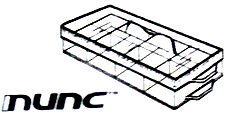
Please read this entire page before using the microscope.
Open chambers are dangerous. Any spill, even a small one, could damage the microscope. But sometimes we need to open chambers. So please be careful!
Any spill, even a small one, must be cleaned immediately, even if it means losing the sample or experiment. First priority is clean the spill.
All spills, even small ones, must be reported to staff so we can check the equipment.
Important safety procedures to protect lenses:
Coverslips should be #1.5 for best resolution and most accurate Z scaling.
Make sure samples are clean and dry.
Coverslips should be squeaky clean, no streaks or spots, both to protect lenses and for highest quality images.
Nail polish must be completely dry.
Mounting media that set, such as Prolong Gold, must be fully hardened. This protects lenses and is needed for best image quality.
Highly recommended: Do not use mounting media that contain Dapi.
2.
This is the default stage. [Insert picture] For standard work, samples need to fit this stage. There are exceptions, notably when the insert CO2/heated chamber is used, but for most imaging, samples need to be compatible with this stage.
The sample is held in place by thin metal under the long ends of the sample. For instance, wells that extend all the way to the ends may not be accessible to the lens. Also, tabs on chambers may need to be cut off to allow the chambe to sit in the recessed stage. The Nunc / LabTek II chambers have both these problems. In the 8 well system pictured, only the middle 4 wells may be used and the bottom tab needs to be clipped or shaved off.

more pics at https://www.flickr.com/photos/mcammer/8553907257/ and https://www.flickr.com/photos/mcammer/8553907715/
This chamber system by Ibidi allows for all 8 wells to be accessed.

35 mm dishes with recessed #1.5 coverslips work fine.
There may be exceptions and we can make many unusual chambers work, but these are the standard walk-in conditions.